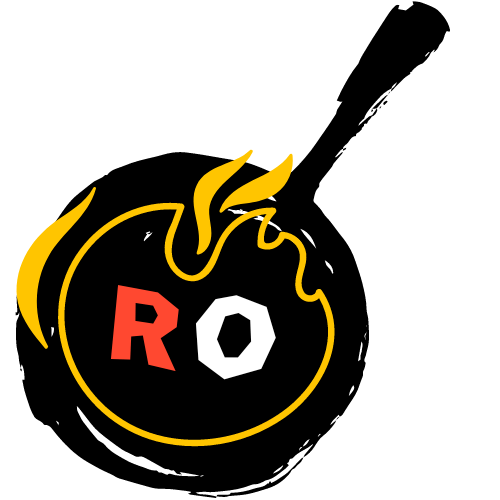7 Design Mistakes I Made and What I Learned from Them
Diving into the world of 7 design can be fraught with pitfalls; however, this article demystifies the process, unpacking essential lessons learned from common mistakes. It offers a practical exploration of key design considerations, from adaptable workstations to sustainable design elements. Insights from seasoned industry professionals provide a roadmap to navigate the complex terrain of impactful and efficient design.
- Prioritize Adaptable Kitchen Workstations
- Balance Functionality and Aesthetics in Layout
- Consider Acoustics for Comfortable Dining Experience
- Involve Staff in Restaurant Design Process
- Choose Timeless Design Over Trendy Elements
- Plan Sufficient Storage for Efficient Operations
- Incorporate Sustainable Design for Long-Term Benefits
Prioritize Adaptable Kitchen Workstations
Our most costly mistake was designing our prep kitchen with fixed workstations rather than modular, movable units. We initially created beautiful custom counters with specific functions, only to discover that our workflow needs changed dramatically with different event types and seasons. During holiday rushes, this rigidity created bottlenecks that affected both staff morale and production efficiency. We've since transitioned to high-quality mobile preparation stations on lockable casters that can be reconfigured within minutes. This flexibility has increased our production capacity by nearly 30% in the same square footage. The lesson was invaluable: prioritize adaptability over aesthetics when designing working spaces, especially in a business where needs evolve as rapidly as seasonal menus.

Balance Functionality and Aesthetics in Layout
When I was setting up my restaurant, the biggest misstep was underestimating the importance of a functional kitchen layout. In the design phase, I was so focused on the dining area and its aesthetics that I allocated minimal space for the kitchen. This oversight led to a cramped workspace, which not only hampered the staff's ability to move around efficiently but also slowed down our service, affecting overall customer satisfaction.
This experience taught me that functionality should never be sacrificed for style, especially in a high-paced environment like a restaurant. Streamlining operations and ensuring there is ample space for the staff to perform their tasks is crucial. From this lesson, I revamped the layout to prioritize operational efficiency while still maintaining the dining area's charm, ultimately enhancing both employee performance and customer experience. Moving forward, I now always consider practicality and functionality right alongside aesthetics to create a balanced and efficient restaurant environment.

Consider Acoustics for Comfortable Dining Experience
Overlooking the importance of acoustics in restaurant design can significantly impact the dining experience. When sound bounces off hard surfaces, it creates a noisy environment that makes conversation difficult. This excessive noise can lead to customer discomfort and dissatisfaction, potentially driving away repeat business.
Additionally, staff may struggle to communicate effectively, leading to service issues. To avoid these problems, designers should consider incorporating sound-absorbing materials and strategically placing them throughout the space. Take the time to consult with acoustic experts to create a pleasant auditory atmosphere in your restaurant design.
Involve Staff in Restaurant Design Process
Neglecting to involve staff in the design process can result in inefficient workflows and decreased productivity. Restaurant employees have valuable insights into the practical needs of their work environment. Without their input, designers may create spaces that look good but function poorly in real-world situations.
This oversight can lead to unnecessary movement, wasted time, and increased stress for workers. Moreover, staff dissatisfaction may result in higher turnover rates, affecting the overall quality of service. Engage your restaurant staff early in the design process to create a more functional and enjoyable work environment.
Choose Timeless Design Over Trendy Elements
Prioritizing trendy design elements over timeless aesthetics can lead to a quickly outdated look. While following current trends may seem appealing initially, it often results in a space that feels dated within a short period. This approach can necessitate frequent and costly renovations to keep up with changing styles.
Instead, focusing on classic design principles and incorporating trends in easily changeable elements can create a more enduring aesthetic. Consider investing in high-quality, timeless materials and furniture that will stand the test of time. Embrace a design philosophy that balances current trends with lasting appeal.
Plan Sufficient Storage for Efficient Operations
Underestimating storage needs in restaurant design can lead to clutter and disorganization. Insufficient storage space forces staff to improvise, often resulting in visible messes and inefficient use of space. This lack of organization can slow down service, create safety hazards, and negatively impact the overall ambiance of the restaurant.
Proper storage solutions are crucial for maintaining a clean, efficient, and professional environment. When designing a restaurant, carefully assess all storage requirements, from kitchen equipment to table linens. Plan for ample, well-organized storage areas to ensure a smooth operation and maintain a clutter-free dining area.
Incorporate Sustainable Design for Long-Term Benefits
Ignoring sustainability aspects in restaurant design can significantly increase long-term operational costs. Energy-inefficient appliances, lighting, and HVAC systems contribute to higher utility bills and a larger carbon footprint. Additionally, using non-sustainable materials may lead to more frequent replacements and renovations.
Sustainability in design goes beyond just being environmentally friendly; it also affects the restaurant's bottom line and public image. Incorporating green design elements can attract environmentally conscious customers and potentially qualify the business for eco-friendly certifications. Make sustainability a priority in your restaurant design to reduce operational costs and appeal to a growing market of environmentally aware diners.

